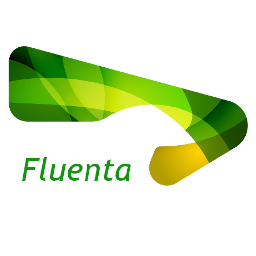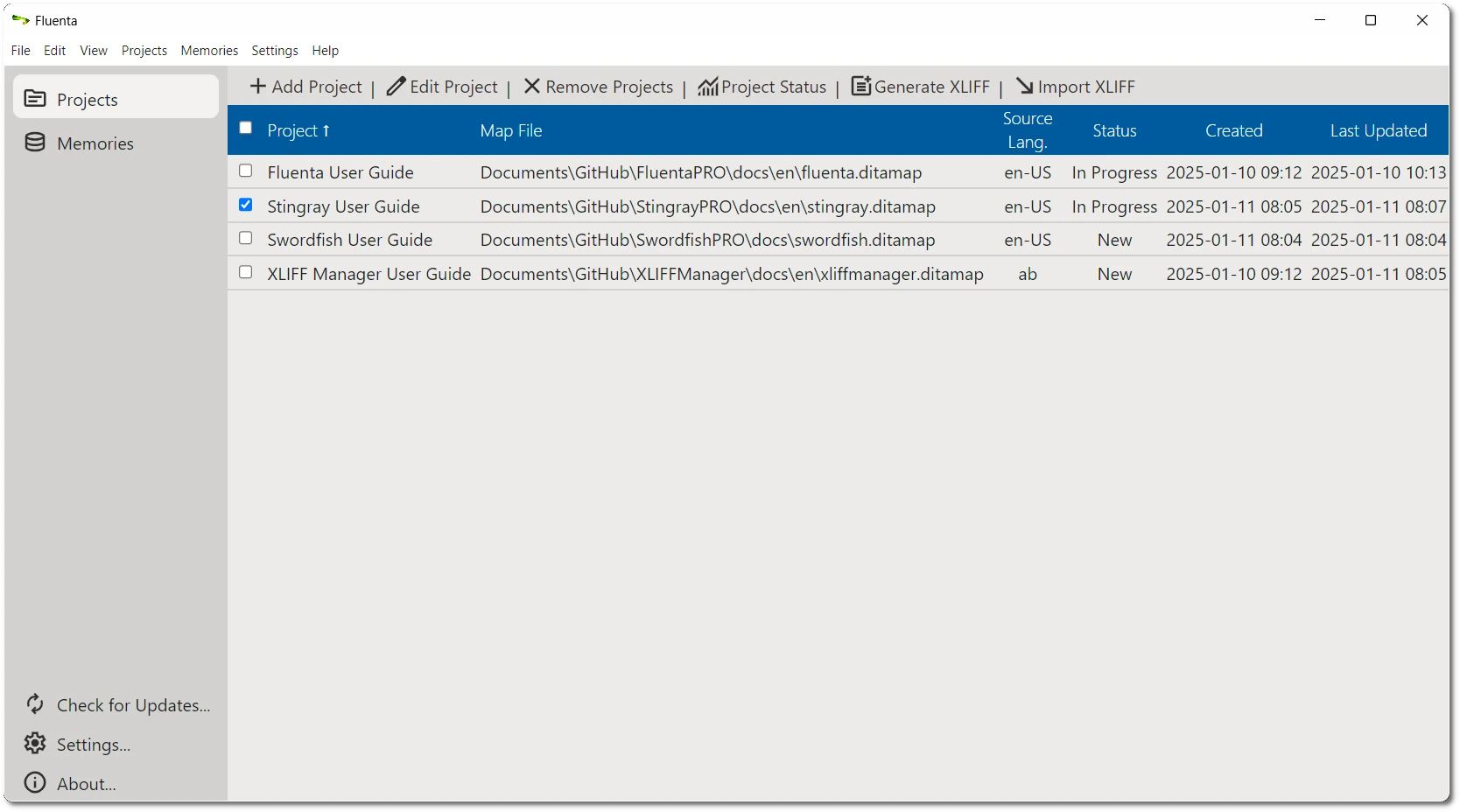
Fluenta
Fluenta simplifies the translation and localization of DITA projects by combining two open standards from OASIS: DITA and XLIFF.
Fluenta implements the workflow described in the article Use XLIFF to Translate DITA Projects, making it easy to manage the translation side of your DITA projects according to the procedure recommended by the OASIS DITA Adoption Technical Committee (see the official TC publication, available in PDF format from OASIS and in HTML format from ditatranslation.com).
DITA is an XML vocabulary, but not just any XML. It has certain peculiarities that are not easily handled by a standar XML editor or a translation tool.
Just like an XML editor that is good for authoring in DITA, a translation tool that can properly handle DITA files should:
- Be able to resolve DITA content references, such as the
conrefattribute or thekeyrefmechanism; - Support DITA specializations that allow customization of translatable elements and attributes.
- Understand the
translateattribute.
Fluenta is designed to handle all of the above issues.
A DITA project can contain hundreds of small files. That's not unusual but it usually makes file handling a bit tedious. Fluenta is able to parse a DITA map, resolve the references to all topics and subtopics, and prepare a unified package that you can send to your Language Service Provider (LSP).
If your LSP charges you for file management, you can reduce costs by preparing a consolidated translation package in-house using Fluenta.
How it works
- Start by creating a new project in Fluenta. All you have to do is specify the location of your DITA map, a name for the project and select the languages that you want to translate into.
- When you are ready to translate your project, ask Fluenta to generate an XLIFF file.
- Send the XLIFF file to your Language Service Provider and wait for a translated XLIFF or translate yourself using a CAT tool such as Swordfish Translation Editor.
- Import the translated XLIFF and choose a folder where to store the translated version of your map and topics.

Fluenta Workflow
After updating your DITA content, you may want to update your project's translations. All you need to do now is:
- Ask Fluenta to create a new XLIFF file.
- Send the XLIFF file to your LSP and wait for a translated XLIFF.
- Import the translated XLIFF and select the folder where you want to save the updated translated version of your map and topics.
Fluenta automatically recovers In-Context Exact (ICE) matches from the translation saved in the previous cycle. This means you don't have to pay again to translate content that hasn't changed.
Thanks to the Translation Memory (TM) technology included in Fluenta, you can also recover translations of parts that have changed slightly.

Fluenta running on Windows 11
Open Source

The source code of Fluenta is available under the Eclipse Public License v1.0 on GitHub. Anyone can download, compile, modify and use the source code free of charge under the terms of the license.
We offer subscriptions for installers, technical support, bug fixes, and feature requests. By subscribing to our support plan, you not only get access to our expertise and help, but you also contribute to the continuous improvement of Fluenta. Your subscription fees pay for code development costs and ensure the quality and reliability of our software.
The version of Fluenta included in the official installers from the Fluenta Download Page can be used with a free 30-day trial by requesting an evaluation key. After the free trial period expires, you will need to purchase a subscription.
Subscription keys are available from our Online Store. Subscription keys cannot be shared or transferred to different machines.
The subscription version includes direct email support at tech@maxprograms.com
Subscription Benefits
| Source Code | Subscription Based | |
|---|---|---|
| Ready To Use Installers | No | Yes |
| Notarized macOS launcher | No | Yes |
| Signed launcher and installer for Windows | No | Yes |
| Headless mode batch scripts for running from CLI (Command Line Interface) | No | Yes |
| Technical Support |
|
|
